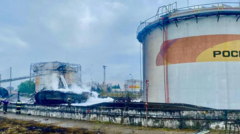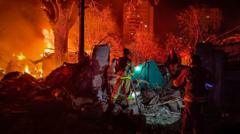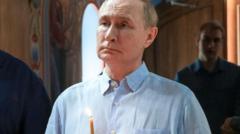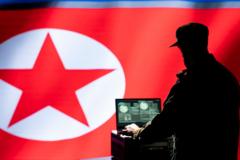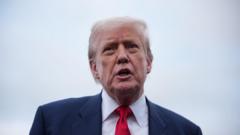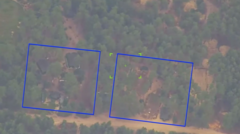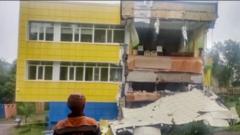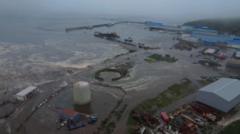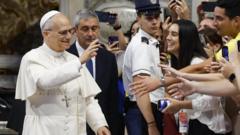North Korea’s Kim Jong Un recently inspected artificial intelligence-equipped suicide drones, marking a significant advancement in the nation’s military capabilities. As tensions escalate, experts believe Russian assistance is pivotal in this technological development, further complicating the regional security landscape.
Kim Jong Un Inspects New AI-Powered Suicide Drones amid Heightened Tensions
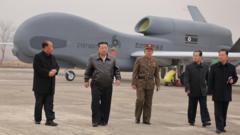
Kim Jong Un Inspects New AI-Powered Suicide Drones amid Heightened Tensions
North Korean leader Kim Jong Un is pushing advancements in military drone technology, including AI-assisted suicide drones, raising concerns for regional security.
Kim Jong Un was photographed overseeing the latest advancements in North Korean military technology, specifically the newly developed suicide drones that have been integrated with artificial intelligence, as reported by the Korean Central News Agency (KCNA). These images display Kim on a runway, flanked by officials, inspecting the drones designed to crash into targets using their onboard warheads. KCNA stated that Kim has endorsed a plan to ramp up production of these advanced weapons.
Analysts suggest that North Korea's burgeoning technology is significantly bolstered by collaboration with Russia, especially given their recent military cooperation, including North Korean troops assisting in Russia's ongoing conflict in Ukraine. James Patton Rogers, an expert on drone technology from the Cornell Brooks Tech Policy Institute, highlighted the concerning implications of North Korea's drone capabilities, asserting that such developments necessitate careful scrutiny from South Korea and the broader international community.
The drones, first unveiled in August 2024, reflect North Korea's commitment to integrating artificial intelligence into its military strategies. Rogers outlined the pressing concern regarding the drones' algorithms, questioning if they are sophisticated enough to make sound decisions that would not exacerbate tensions on the Korean Peninsula.
In addition to the drones, Kim Jong Un also presented what is presumed to be North Korea’s inaugural airborne early-warning aircraft. This aircraft, similar in design to commercial airliners, employs radar technology to monitor combat zones from above. South Korean officials highlighted that the operational effectiveness of this new aircraft would require further assessment.
Concerns about North Korea's technological advancements are further fueled by allegations that Kim's regime has provided weapons to Russia, in exchange for military technology that may enhance North Korea's missile capabilities. Under an agreement signed in June, the two nations pledged mutual support against potential aggressors, which deepens the complexity of their bilateral relations.
As tensions in the region heighten, the implications of North Korea’s evolving military technology remain a vital point of discussion among defense analysts and policymakers, especially considering the involvement of Russia in this equation. Recent reports have indicated that approximately 1,000 North Korean soldiers have died in Ukraine, highlighting the intertwined fates of these nations as they navigate their strategic military alliances.
Analysts suggest that North Korea's burgeoning technology is significantly bolstered by collaboration with Russia, especially given their recent military cooperation, including North Korean troops assisting in Russia's ongoing conflict in Ukraine. James Patton Rogers, an expert on drone technology from the Cornell Brooks Tech Policy Institute, highlighted the concerning implications of North Korea's drone capabilities, asserting that such developments necessitate careful scrutiny from South Korea and the broader international community.
The drones, first unveiled in August 2024, reflect North Korea's commitment to integrating artificial intelligence into its military strategies. Rogers outlined the pressing concern regarding the drones' algorithms, questioning if they are sophisticated enough to make sound decisions that would not exacerbate tensions on the Korean Peninsula.
In addition to the drones, Kim Jong Un also presented what is presumed to be North Korea’s inaugural airborne early-warning aircraft. This aircraft, similar in design to commercial airliners, employs radar technology to monitor combat zones from above. South Korean officials highlighted that the operational effectiveness of this new aircraft would require further assessment.
Concerns about North Korea's technological advancements are further fueled by allegations that Kim's regime has provided weapons to Russia, in exchange for military technology that may enhance North Korea's missile capabilities. Under an agreement signed in June, the two nations pledged mutual support against potential aggressors, which deepens the complexity of their bilateral relations.
As tensions in the region heighten, the implications of North Korea’s evolving military technology remain a vital point of discussion among defense analysts and policymakers, especially considering the involvement of Russia in this equation. Recent reports have indicated that approximately 1,000 North Korean soldiers have died in Ukraine, highlighting the intertwined fates of these nations as they navigate their strategic military alliances.

